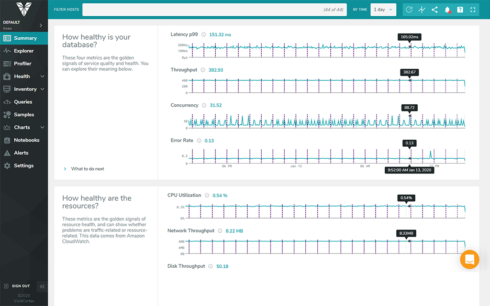
SolarWinds is adding the Database Performance Monitor solution to its IT operations management portfolio to give users the ability to manage on-premise, hybrid, and cloud-native databases. The new addition features before-and-after analysis, and root cause granularity for open-source and NoSQL databases.
“As open-source and NoSQL databases grow in popularity and a new generation of applications are built on these platforms, developers, DevOps pros, DBAs, and monitoring engineers need more from their database monitoring solutions,” said Sandy Orlando, senior vice president of products at SolarWinds. “By introducing Database Performance Monitor as part of our ITOM portfolio, we’re giving tech pros the level of analysis and visibility they need to resolve database issues quickly—even in increasingly complex microservices environments.”
Other features include always-on 24/7, adaptive fault detection, customizable dashboards, real-time visibility, visibility into how new code impacts database workload and query performance, and best practice-based recommendations.
Dynatrace introduces new support for Kubernetes
The extended support automatically ingests additional Kubernetes events and metrics so that users can get more precise answers about performance issues and anomalies in real time. The support includes the full stack of Kubernetes clusters, containers and workloads. In addition, the company automatically discovers, instruments and maps heterogeneous container technologies within Kubernetes.
Other key features include new cloud application and microservices analysis capabilities and extended automatic container instrumentation.
Incorta 4.6 now available
The new feature focuses on bringing data engineers, data scientists and data analysts together under one platform. The company is calling 4.6 the “cloud data lake release” because it provides integration and support for ADLS Gen2 and AWS S3 cloud storage technologies. With the new features, the company says users can access data that is currently locked up in cloud data lakes and bring new data into the cloud data lake storage.
“Today’s CIOs are in a race against the clock. The amount of data flowing into organizations is growing exponentially, and so is the demand for access to it. Trying to get ahead of the backlog with incremental improvements on existing approaches and technologies alone is a futile task. It’s like trying to supply water to New York City with a garden hose—you’ll just keep falling further and further behind every day,” said Matthew Halliday, co-founder and VP of product at Incorta. “What’s needed is a fundamentally new approach








